On my parents' farm in southern Virginia, the fence line that seperates their private land from the neighbors that have cows grazing is a wild row of Eastern Red Cedars (Juniperus virginiana).
They come up on their own, and are considered locally a 'weed tree' though they are magificant habitat for birds and provide shelter for Spring greens growing underneath their canopy. Actually, we found greens growing there even in January which is the heart of winter here.
As you can see in the scientific name, Eastern Red Cedar is actually a Juniper. This matters because the common name 'Cedar' is used for lots of plants, but the actual Cedars that are referred to in the Bible as 'true Cedars' grow in the middle east, and are of the Cedrus genus, in the Pine family, not closely related to Junipers which are in the Cypress family.
These Eastern Red Cedars also are a good privacy shield and wind block. I love watching the birds take up home in them and seeing what comes and goes as Spring comes along.
What's most noticeable though on these trees are these orange-brown globs hanging from them almost like Christmas ornaments.
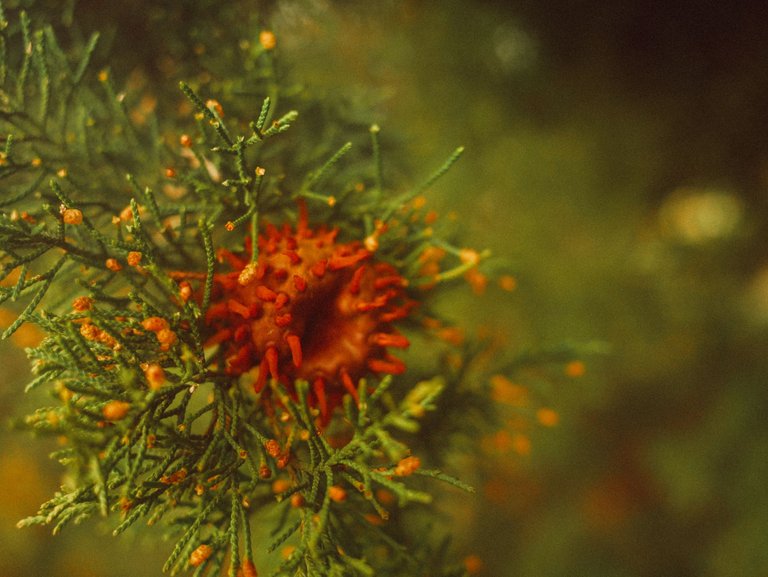
In the winter, these things are brown and seem to look almost like some kind of Walnut or Pecan. They often are attached to branches or even into part of the foliage of the plant.
These are Gymnosporangium juniperi-virginianae or a plant pathogen that affects Juniper trees, and there are different species of this pathogen that hosts on other plants in the Cypress family, and alternatively hosts on Rose family plants as well.
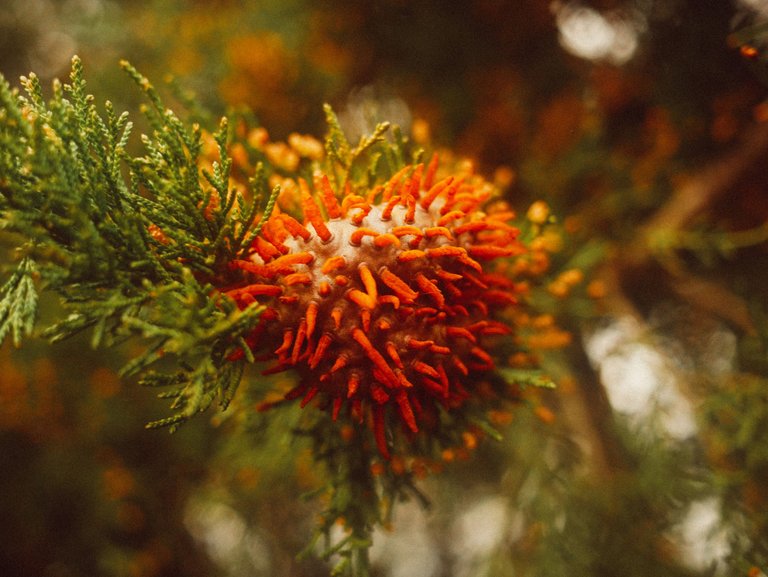
Why does this matter?
Well, because as a society we love to eat things that come from the Rose family. Almonds, Apples, Pears, Peaches, Cherries, Juneberries, Roses, Hawthorn, are all in the Rose family.
Cedar-rust especially inflicts Apple trees, especially if they are not bred for resistance to this pathogen. Across the field from this hedgerow, my dad has an apple orchard planted, and needless to say, they are not doing well.
As these 'globules' (so scientific i know) transform and start to spore, they will turn into this orange looking goop. They are halfway there now. The spores will release when the apples trees start to flower, and they can affect the apple's flowers, bark and leaves.
Many people spray to get ride of these things, but they don't really hurt anything unless you want apple trees.
In south-central Virginia, the Piedmont region, zone 9 or so.. Apples aren't really the prime fruit tree to plant. Apples like cooler weather and less hot summers. And, these Eastern Red Cedar trees thrive here. There's no way to get rid of them all.
People tried to get rid of them historically, as the apple was a 'promise' of prosperity for settlers first arriving to North America to try to stake a claim on native land.
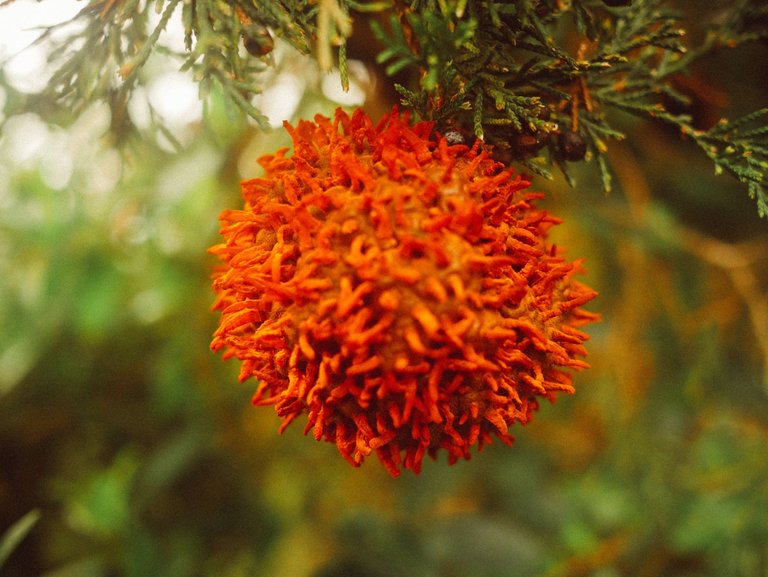
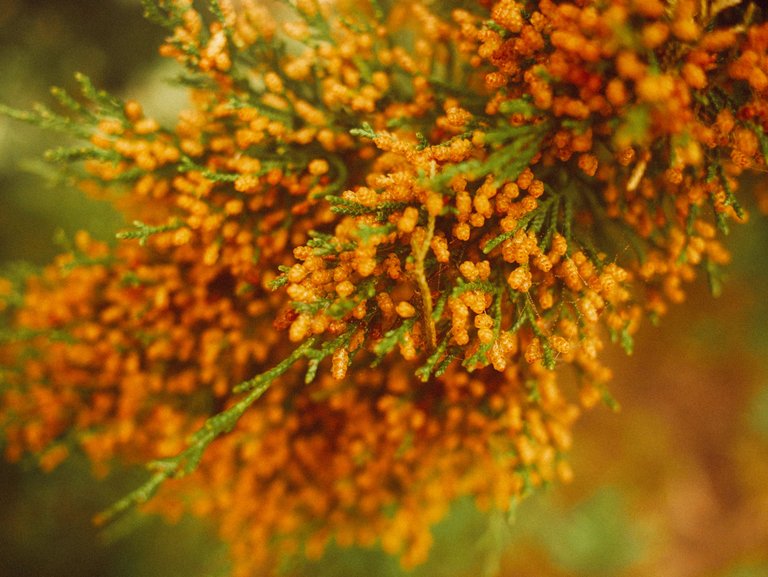
This picture shows the male pollen cones right after they released their pollen a few weeks ago. I was majorly sneezing!
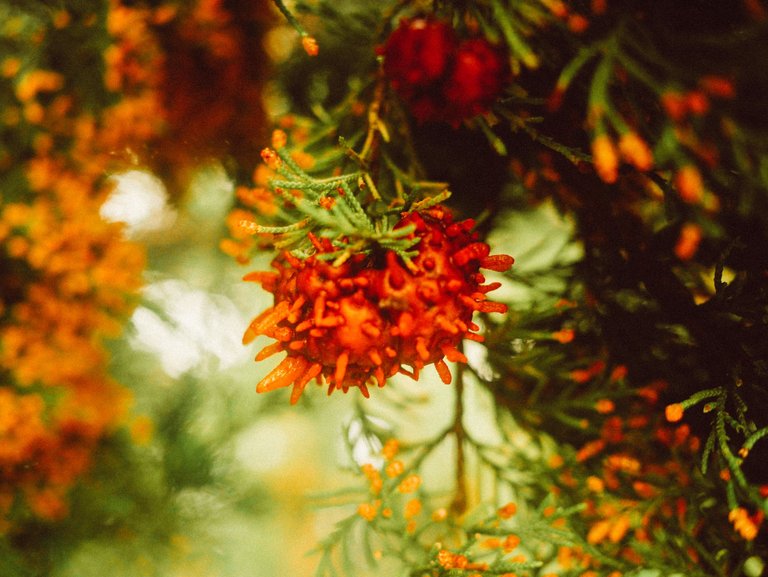
So if you have these trees around and were ever wondering what these alien looking things were, they are Cedar-rust!
By fall, they are full of tannins, and folks even use them to make gall ink, and I bet they would also be good for bark-tanning leather. I'm going to try that this year if I stick around the Southeast U.S. long enough.
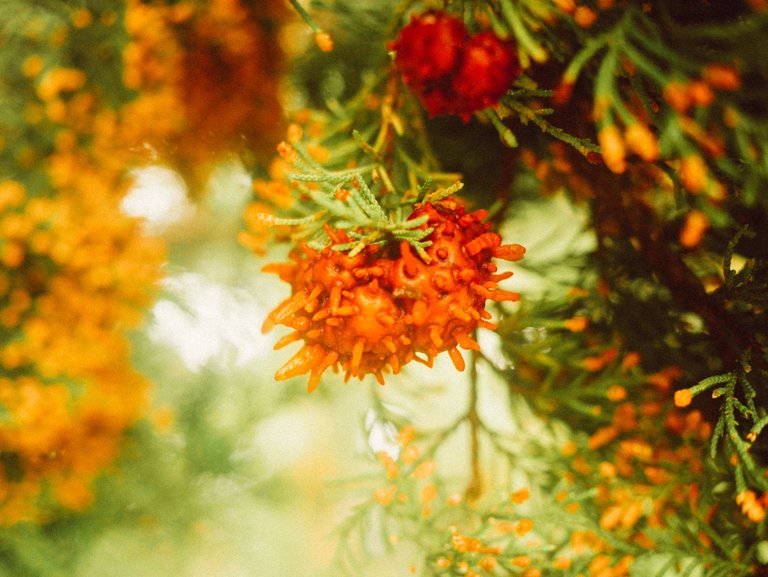
Fascinating!! & can I say great shots too? I LEARNED SOMETHING from your post, & that's always a win.
Wonder if you could preserve them for Christmas?
Posted using Dapplr
i bet you could. folks here cut them down for christmas trees and heck, they're already attached with ornaments!
definetly aliens! ;D
literally everyday they shapeshift. I've never seen anything like it
Not having cedars around here, I'd never seen these galls. I know oak galls make gall ink, but it's interesting to know these can too.
I didn't know that about them until recently too!
The photographer of you is nice and the caption you write meaning for read and alive everyone.
thank you!